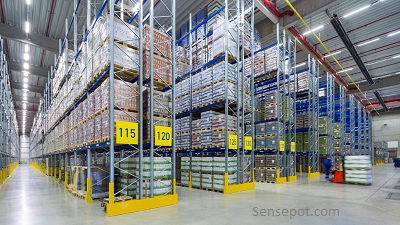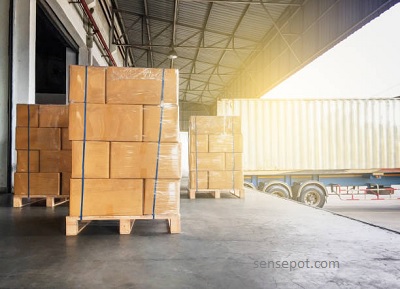The Importance of Technology in Professional Warehousing 2023. Anything has two states: when it is used and when it is stored. We are accustomed to paying attention only to functionality: the thing works well, but many do not pay due attention to storage. Well, skis lie on the balcony in the summer and lie – what will happen to them? And there will be a lot of interesting things: varnish and paint fade in the sun, the tree dries out in the 30-degree heat, and at the time of the humidity difference, metal fasteners can completely rust. You obviously won’t like this arrangement. Therefore, storage must be approached responsibly and wisely. This is worth learning from professional warehousing – those who are engaged in warehousing things for a long time.

Common problems that people have in-home storage is that things deteriorate due to external conditions: weather, temperature, humidity, dust, odors, as well as safety. All these factors do not affect the warehousing of things, where conditions are created in advance so that they are stored safely and without damage. If at home things, for example, can get dirty, damaged, lost, they can be stolen, then this is impossible in a warehouse. In this article, we will take a closer look at exactly how modern warehousing of things differs from ordinary home storage and how to use it.
Basic principles of professional warehousing
There are many warehouses in Moscow and other cities. They are of different sizes and offer different services: some can store only things, and others have special conditions for storing food and other goods that require specific conditions. We will list the basic principles of storage – these points will be the same for all warehouses that provide proper long-term storage.
1. Safety
The main point that comes first is the guarantee of the safety of things. To do this, the warehouses are provided with round-the-clock security. The staff ensures that there are no strangers on the territory of the warehouse, and also checks the correct operation of engineering networks – so that the building is heated, ventilated, and connected to the power grid without interruption so that no unforeseen force majeure occurs. But it is impossible to rely only on the human factor, so all warehouses have video surveillance without “blind” areas. This means that video cameras are placed along the perimeter of the warehouse in such a way that every square meter will fall into the recording zone – this ensures maximum security for every item in the warehouse.
2. Compliance with certain storage conditions under which things will not deteriorate
These conditions include temperature, humidity, cleaning, and lack of direct sunlight. The ideal temperature in the warehouse is from +15 to +20 degrees Celsius. Humidity should not exceed 60-70%. Cleaning should be done at least 2 times a week. So that ultraviolet does not spoil things, there should be no access to the sun, so the warehouse is most often closed, without extra windows next to the racks. This is especially important for storing materials such as painted wood, fabric, rubber, and paper.
3. Preservation
Things should not be lost or damaged; for this, the warehouses have their own logistics and accounting system. Each client’s belongings must be labeled and packed separately in a film. At the same time, the ideal option is when things of one client are stored on one pallet. Unpacking is not allowed without a special request from the client.
4. Provision of additional services
In addition to the actual storage in a modern warehouse, there are additional services.
- Delivery of things to the warehouse from home;
- Return of things to the house in any point of Moscow and the Moscow region;
- Packing things;
- dismantling of furniture.
These services make storage as convenient as possible: customers do not need to buy packaging materials themselves, pack things, drag them to the warehouse on their own, or arrange things inside the storage cell or box.
5. Use of modern storage systems
The warehouse should have comfortable and spacious racks, and pallets, equipped with special mounts for sports equipment – bicycles, skis, snowboards, and there should also be zoning – tires separately, motorcycles separately, furniture separately, etc.
6. Use of modern equipment
Special rack loaders (stackers) help people manage storage in a warehouse. Thus, warehouse workers using such equipment can quickly manage the movement of things – deliver them to a certain place in the warehouse and pick them up from there.
The use of modern equipment in warehousing has become increasingly popular due to its ability to improve efficiency and accuracy. Modern equipment, such as automated storage and retrieval systems, conveyor belts, and robotic picking systems, can perform tasks faster and more accurately than human labor. This not only reduces the risk of errors and accidents but also enables businesses to handle larger volumes of goods in less time.
One of the most significant advantages of modern equipment is its ability to enhance inventory management. For example, automated storage and retrieval systems can help businesses manage their inventory more efficiently by automatically storing and retrieving items, reducing the need for manual labor and minimizing the risk of errors. Similarly, conveyor belts can transport goods quickly and accurately from one location to another, reducing handling time and improving order fulfillment.
Health-related post: Cica Cream Uses and Benefits For Oily Skin
Another benefit of modern equipment is that it can reduce labor costs. With the use of equipment like robotic picking systems, businesses can reduce their reliance on manual labor, allowing them to allocate their resources more effectively. Additionally, modern equipment can help minimize the risk of workplace injuries and accidents, reducing the need for costly workers’ compensation claims and other related expenses.
Overall, the use of modern equipment in warehousing is an essential element in optimizing logistics operations. Businesses that invest in modern equipment can improve their inventory management, reduce labor costs, and improve overall efficiency and accuracy. By doing so, they can gain a competitive advantage and position themselves for long-term success in the market.
7. Applying modern storage principles
One of the most critical aspects of modern storage principles is the use of technology. Businesses can use automated storage and retrieval systems, RFID technology, and other advanced systems to manage inventory more efficiently and accurately. These technologies can help businesses track inventory levels, reduce the risk of errors, and improve overall inventory management.
Optimizing space is another key principle of modern storage. By using advanced storage systems such as pallet racking and mezzanine floors, businesses can utilize vertical space to maximize their storage capacity. This not only increases storage efficiency but also reduces the need for additional warehouse space, saving businesses money in the long run.

Implementing efficient processes is also essential for modern storage principles. This includes utilizing just-in-time inventory management, implementing lean warehousing practices, and optimizing order fulfillment processes. By streamlining these processes, businesses can reduce lead times, improve accuracy, and minimize waste, resulting in more efficient and cost-effective warehousing operations.
In addition to these principles, businesses can also incorporate sustainable practices into their warehousing operations, such as utilizing renewable energy sources and implementing green packaging solutions. By doing so, they can not only reduce their carbon footprint but also attract customers who value sustainability.
Overall, applying modern storage principles is crucial for businesses to optimize their warehousing operations. By utilizing technology, optimizing space, and implementing efficient processes, businesses can improve overall efficiency, accuracy, and sustainability, giving them a competitive edge in the market.
8. “Transparent” cost of storage services without overpayment “for air”
In addition to the correct storage conditions, the cost of services is also important for customers. Many people pay attention to the price that the client pays per month, but in fact, there is a big difference – in what the price is assigned. Usually, you pay the price for a box – that is, for a certain area. If your things are less than the box or cell can accommodate, then you still pay at the full rate (i.e. for the entire area of the box or cell).
9. High organization of logistics, mobility, and efficiency
One of the most important points is logistics. In a modern warehouse, the delivery of things for storage should take place in one day and not cause trouble to the client.
FAQs
What is the role of inventory management in warehousing?
Inventory management is critical in warehousing as it ensures that the right amount of inventory is available at the right time to meet customer demand while minimizing storage costs and reducing the risk of stockouts.
What are some common inventory management problems and solutions?
Common inventory management problems include inaccurate inventory records, overstocking or understocking, and poor forecasting. Solutions include implementing an inventory management system, conducting regular cycle counts, and improving forecasting accuracy.
How can businesses improve their order processing?
Businesses can improve their order processing by automating order entry and processing, integrating order processing with inventory management and transportation management systems, and improving communication with customers.
What types of technology are used in warehousing?
The technology used in warehousing includes warehouse management systems, automated storage and retrieval systems, barcode scanners, and transportation management systems.
What are some best practices for sustainable warehousing?
Best practices for sustainable warehousing include reducing energy consumption, optimizing transportation, minimizing waste, and promoting environmental responsibility among employees and suppliers.


